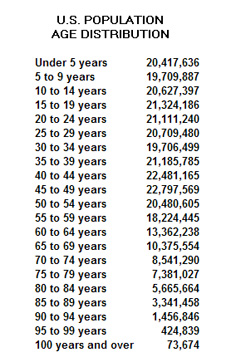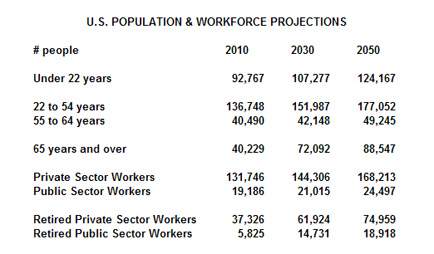The Empathy of Competition
It isn’t as if anyone isn’t able to hear the warnings of the reactionaries or feel the resentments of the radicals. But beyond both legitimate fears and illegitimate hatreds is a deeper bond among humans that no messenger of tribalism or religion or race or national patriotism or even privilege can erase – the empathy of competition.
We see it in the Olympics every two years, as they alternate between summer and winter games, and take us all to every corner of the world. We see these games attract athletes from every nation and engage the passions of the world.
An even better example of this empathy of competition would have to be the World Cup soccer tournament – or football – as the rest of the world calls the game. Nearly every nation sends a team, with 64 surviving the qualifying rounds. Every fourth year, as spring comes to an end and on through the summer solstice, through even U.S. Independence day on the 4th of July, the tempers and timelines of the world run a mite slower, as billions of people dedicate hours – in countless cases every hour they can spare – to following this greatest of global tournaments.
On Friday July 2nd a very tired team from Uruguay eked a hardfought and lucky decision over an inspired team from Ghana, in a match that exemplified the intense drama of all the games. With overtime expired and one kick left, the Uruguayan defenders desperately repelled shots at the goal, until finally the ball was deflected by the upstretched hand of a defender – not the goalie. The ensuing penalty kick was missed, and the game went into a sudden death where each team is given five penalty kicks. Uruguay edged out on top, hitting four out of five, and Ghana was dealt a heartbreaking and unexpected defeat.
Later that day I discussed this game with the cashier at a corner store where an overhead television was showing a rerun of the Netherland’s victory over Brazil, another upset that surprised the world. Recapping the surprising victory of the Uruguyan team elicited chortles of amazement from both of us. And we shared this spontaneous World Cup camaraderie despite being total strangers, despite our lineage originating from opposite hemispheres, despite whatever madness and antipathy might infect various fighting factions in his land or mine. The empathy of competition.
You can see this empathy in the eyes of players who have spent every ounce of energy they could store, when their passion has all been poured onto the field of play. And in the exhaustion of passion comes the empathy of knowing you could have been the victor or the vanquished, and every game is another opportunity to prevail. You see empathy in the exhausted eyes of the winner shaking hands with the loser. You see it in the mutual respect the players earn when they give it their all.
The harsh reality of competition in the world of business and money might suggest that the empathy and character that is forged on a sporting field cannot be earned and rewarded in the real world. But this suggestion would be wrong, for reasons that are as essential to understanding the beautiful aspects of capitalism as they are unheralded. Empathy is the mitigating redeemer of competition as an activity with moral worth. And competition – the pursuit of individual and collective self-interest – is inevitable. The challenge of capitalism is not whether or not to choose it, but how to regulate it, because no other system of political economy embraces competition. Capitalism at its core is a uniquely practical system that doesn’t deny the human urge to compete, but indeed depends on it.
The empathy that is earned by athletes in sports is completely transferable to capitalist competition – the businessperson who empathizes with their counterpart can navigate the negotiations of the marketplace, the sportsmanship that informs a game can translate to commercial exchanges; the line between empathy and enlightened self-interest is fine indeed. And within the framework of capitalism are winners and losers – with only empathy to guarantee the rules of the game stay fair. Decidedly not least, unlike sports, capitalism doesn’t merely produce winners and losers, but winners and winners, as capitalism creates wealth and opportunities for all, and not merely a zero sum game of win or lose.
The empathy between athletic competitors, the fair-minded channeling of passions in sports, where it is still possible to view these titanic bouts as pure expressions of sportsmanship, teamwork and individual excellence, is an empathy that not only extends to capitalist competition but is needed now more than ever, because empathy is challenged by other factors as never before.
Conventional indexes of empathy among young Americans are at all-time lows, and various theories attempt to account for this. Most prominent is the theory of the internet impact, which has encapsulated individuals in virtual realities, where friendships are acquired and discarded effortlessly, where individual accountability hides behind aliases, and identities and reputations are earned without sweat or consequences, but rather by tapping keys.
Another theory attributes the decline in empathy to multiculturalism in America, where the conventional wisdom taught in public schools now tends to marginalize the traditional American identity and values, and teaches that all cultures and values have equivalent worth. One may decry or defend multiculturalism, but teaching empathy to children is harder when the American identity is in such rapid transition.
Empathy is also under attack by the very blessings that have made life so much more interesting and secure in the developed world, through mushrooming and perpetually transformative new technologies. Where is empathy when the icons of our existence, the furniture of our lives, are completely exchanged for newer and better gadgets every decade or two? Can an alert octogenarian, whose formative years were spent marveling at the wonders of AM radio, easily distinguish between a browser and a search engine? Can empathy overcome the reality of revolutionary new technologies emerging every few years, shredding our interactive fabrics before we’ve even finished installing them? Can empathy cross generations thirty years removed, when new technologies completely redefine how we live every ten years?
This is today’s empathy-challenged milieu that demands the empathy of competition receive recognition as the mitigating, moderating core value of capitalism, because capitalism embraces rather than denies competition. Capitalism is the only system that doesn’t deny the innate competitive urges that forged our spirits, as we emerged from being merely participants in nature’s ruthless food chain into a technologically advanced, urbanized species.
Only capitalism leaves wholly intact the opportunity for every human being to compete, to win, to acquire, to bequeath, to empower themselves. Only capitalism can enable and inform a world of pluralistic, channeled, and empathic competition. Like nature itself, capitalism creates winners and losers, but within this harsh framework, capitalism preserves incentives and maximizes overall wealth.
If anyone might still believe that capitalistic competition isn’t worth encouraging, or that embedded hatreds and the warlike momentum of millennia are ineluctable, or that it is better to seek refuge as members of a select and anointed few, then explain the empathy that saturates humanity as nations compete in the World Cup. Explain the transcendent joy of this simple game that animates everyone. Explain this connecting empathy of peaceful competition, and wonder if maybe this spirit might extend to real life and commerce, and inspire a calming path for our tumultuous world.

Edward Ring is a contributing editor and senior fellow with the California Policy Center, which he co-founded in 2013 and served as its first president. He is also a senior fellow with the Center for American Greatness, and a regular contributor to the California Globe. His work has appeared in the Los Angeles Times, the Wall Street Journal, the Economist, Forbes, and other media outlets.
To help support more content and policy analysis like this, please click here.





